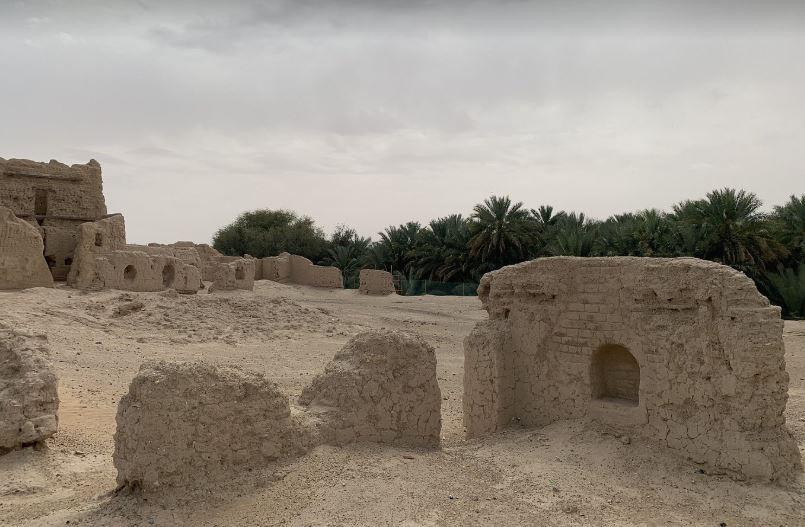Beautiful Al Darmaki Fort of Al Ain UAE
- Muhammad Rehman

- Aug 15
- 3 min read
Al Darmaki Fort is one of the lesser-known yet culturally significant historical landmarks in the United Arab Emirates. Located in the Al Ain region of Abu Dhabi, the fort stands as a quiet symbol of the country’s deep-rooted heritage, tribal traditions, and architectural ingenuity. Unlike the grander and more frequently visited forts such as Al Jahili or Qasr Al Hosn, Al Darmaki Fort is more modest in scale, yet it offers a powerful window into the social and political fabric of the past. Built by the Al Darmaki tribe, one of the well-respected families in the region, the fort was primarily constructed as a residence and defensive structure, serving both as a home and a symbol of authority.
The architecture of Al Darmaki Fort reflects the practical needs and environmental adaptation characteristic of traditional Emirati design. Made from mudbrick, palm trunks, and other locally sourced materials, the fort was constructed to provide insulation from the harsh desert heat while also standing strong against the elements.
The walls are thick, and the layout is simple, with an inner courtyard, watchtowers, and private living areas. These design elements not only ensured protection from potential tribal conflicts or raids but also helped manage daily life in a hot, arid climate. The fort's tower, typically used for surveillance and defense, still stands as a testament to the region's tribal strategies and concern for community safety.
What makes Al Darmaki Fort particularly intriguing is its intimate connection with local tribal history. The Al Darmaki family has long been influential in Al Ain, contributing to the political and social development of the region. The fort served as a base for leadership, where tribal elders would meet, settle disputes, and make important decisions. It also functioned as a community hub, a place where people gathered during times of celebration or conflict. Oral histories passed down through generations indicate that the fort was not just a military or political site, but also a deeply human space where traditions were practiced and preserved.

Over time, the fort, like many heritage sites in the UAE, fell into a period of disuse and deterioration. However, with the government’s increasing efforts to preserve Emirati culture and history, Al Darmaki Fort has seen renewed interest. Restoration initiatives have focused on maintaining the authenticity of the structure while ensuring its longevity. Conservation work typically involves reinforcing the original materials, stabilizing the walls, and restoring key architectural features. These efforts aim to keep the historical character of the fort intact while opening it up for educational and touristic purposes.
Today, Al Darmaki Fort stands not only as a relic of the past but as a bridge between generations. It provides residents and visitors with a tangible connection to a time when the land was shaped more by kinship and tradition than by oil wealth and skyscrapers. For younger Emiratis, it offers a powerful reminder of their roots and the resilience of their ancestors. For tourists, it offers a more personal, less commercialized insight into Emirati heritage, one that speaks through sun-baked walls and silent towers rather than glossy brochures.
In a rapidly modernizing country, landmarks like Al Darmaki Fort serve an essential purpose. They preserve a narrative that might otherwise be lost amid the speed of development. By maintaining and promoting such sites, the UAE not only honors its past but also deepens its national identity. Al Darmaki Fort, though small in size, carries a large historical and emotional weight. Its continued preservation and recognition are vital to understanding the full story of the Emirates—a story not just of skyscrapers and luxury, but of family, tradition, and enduring cultural pride.



Comments